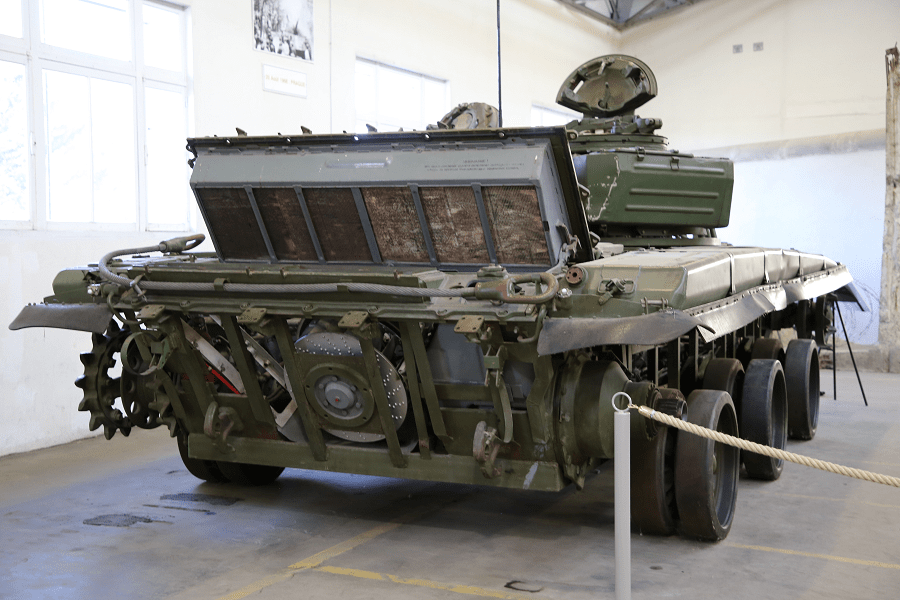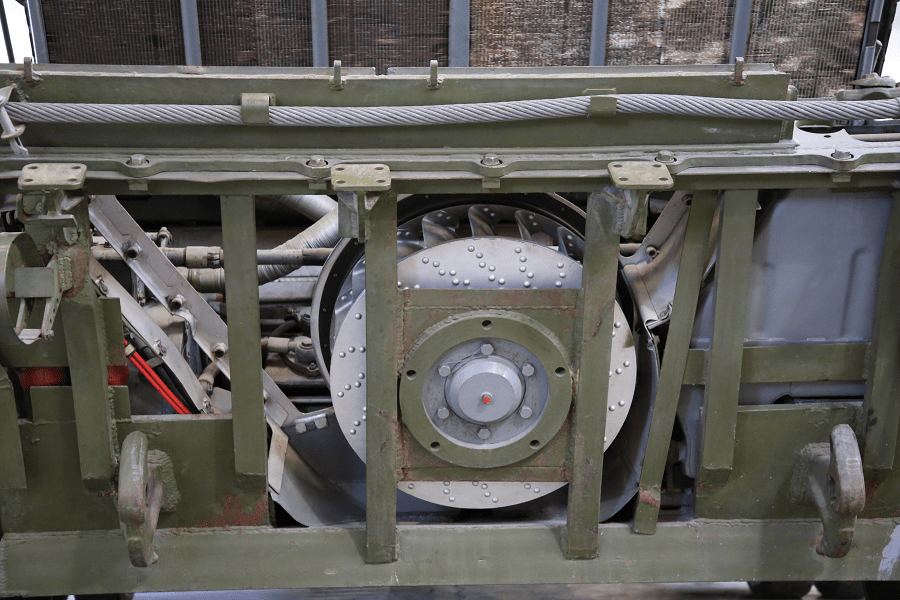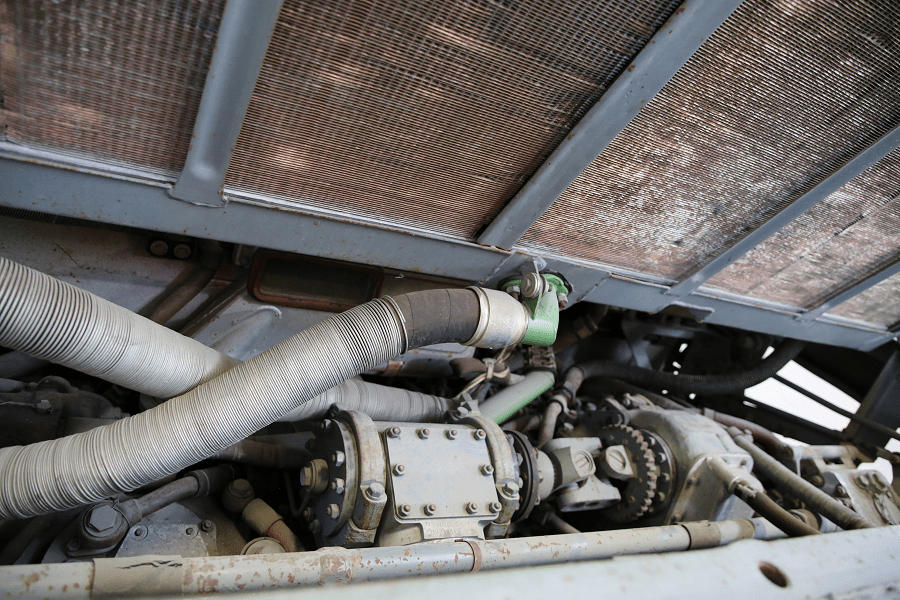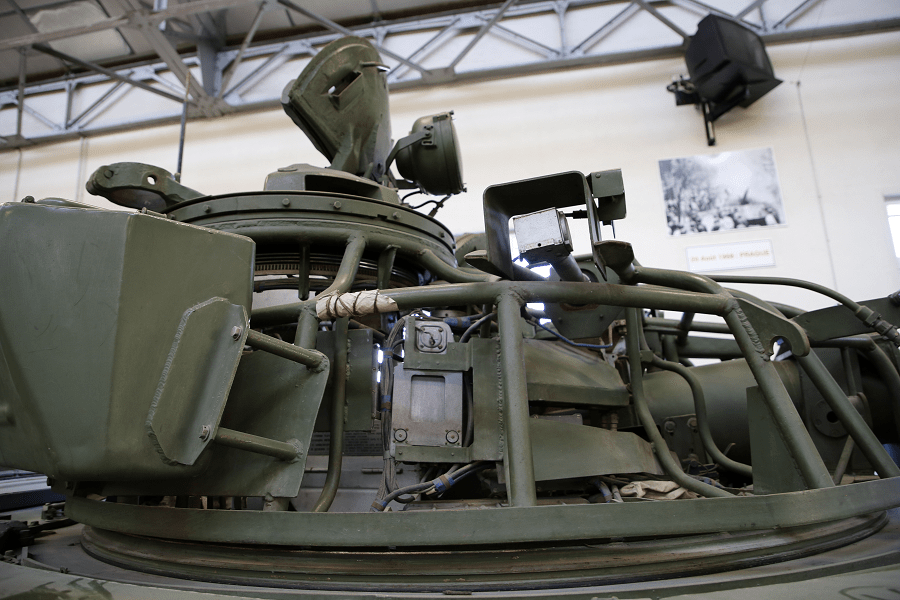The T-72 is a family of Soviet main battle tanks that entered production in 1969. The T-72 was a development of the T-64, which was troubled by high costs and its reliance on immature developmental technology. About 25,000 T-72 tanks have been built, and refurbishment has enabled many to remain in service for decades.
It has been widely exported and has seen service in 40 countries and in numerous conflicts. The Russian T-90 introduced in 1992 and the Chinese Type 99 are further developments of the T-72. Production and development of various modernized T-72 models continues today.
Design characteristics
The T-72 shares many design features with other tank designs of Soviet origin. Some of these are viewed as deficiencies in a straight comparison to NATO tanks, but most are a product of the way these tanks were envisioned to be employed, based on the Soviets’ practical experiences in World War II.
The T-72 is extremely lightweight, at forty-one tonnes, and very small compared to Western main battle tanks. Some of the roads and bridges in former Warsaw Pact countries were designed such that T-72s can travel along in formation, but NATO tanks could not pass at all, or just one-by-one, significantly reducing their mobility. The basic T-72 is relatively underpowered, with a 780 hp (580 kW) supercharged version of the basic 500 hp (370 kW) V12 diesel engine originally designed for the World War II-era T-34. The 0.58 m (1 ft 11 in) wide tracks run on large-diameter road wheels, which allows for easy identification of the T-72 and descendants (the T-64 family has relatively small road wheels).
The T-72 is designed to cross rivers up to 5 m (16.4 ft) deep submerged using a small diameter snorkel assembled on-site. The crew is individually supplied with simple rebreather chest-pack apparatuses for emergency situations. If the engine stops underwater, it must be restarted within six seconds, or the T-72’s engine compartment becomes flooded due to pressure loss. The snorkeling procedure is considered dangerous, but is important for maintaining operational mobility.
Armour protection of the T-72 was strengthened with each succeeding generation. The original T-72 “Ural” Object 172M’s (from 1973) turret is made from conventional cast high hardness steel (HHS) armour with no laminate inserts. It is believed that the maximum thickness is 280 mm (11 in) and the nose is 80 mm (3.1 in). The glacis of the new laminated armour is 205 mm (8.1 in) thick, comprising 80 mm (3.1 in) HHS, 105 mm (4.1 in) double layer of laminate and 20 mm (0.79 in) RHA steel, which when inclined gives about 500–600 mm (20–24 in) thickness along the line of sight. In 1977 the armour of the T-72 Object 172M was slightly changed.
The turret now featured insert filled with ceramic sand bars “kwartz” rods and the glacis plate composition was changed. It was now made up of 60 mm (2.4 in) HHA steel,105 mm (4.1 in) glass Tekstolit laminate and 50 mm (2.0 in) RHA steel.
This version was often known in Soviet circles as T-72 “Ural-1”. The next armour update was introduced by the T-72A (Object 176), which was designed in 1976 and replaced the original on the production lines during 1979–1985. T-72 Object 1976 is also known as T-72A. With the introduction of the T-72B (Object 184) in 1985, the composite armour was again changed. According to retired major, James M. Warford, variants developed after the T-72 base model and T-72M/T-72G MBT, featured a cast steel turret that included a cavity filled with quartz or sand in a form similar to US “fused-silica” armour. The T-72 Model 1978 (Obiekt 172M sb-4), which entered production in 1977, featured a new turret with special armour composed of ceramic rods.
The T-72A featured a new turret with thicker, nearly vertical, frontal armour. Due to its appearance, it was unofficially nicknamed “Dolly Parton” armour by the US Army. This used the new ceramic-rod turret filler, incorporated improved glacis laminate armour, and mounted new anti-shaped-charge sideskirts.
Manufacturer: Uralvagonzavod, Heavy Vehicles Factory



















